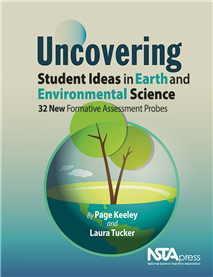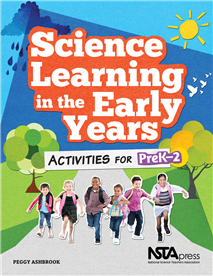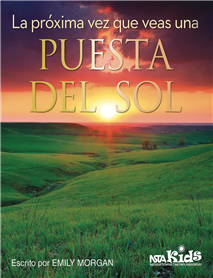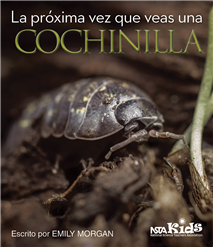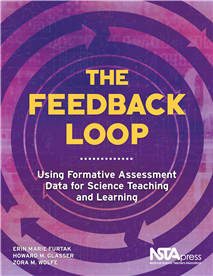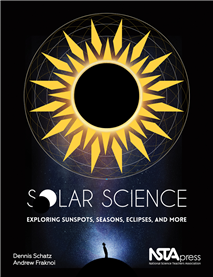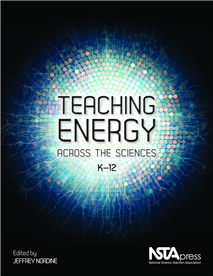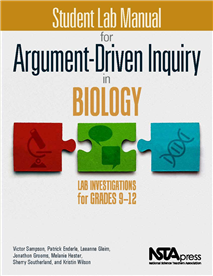All Book Chapters
Book Chapter
The purpose of this assessment probe is to elicit students’ ideas about layers of sedimentary rock. The probe is designed to find out how students think about the age of rock layers. It is best used with grades 6–12, and students should be famili...
Book Chapter
The purpose of this assessment probe is to elicit students’ ideas about erosion. The probe is designed to find out whether students can distinguish between erosion and weathering. When rock material is broken down or changed, but not transported to...
Book Chapter
The purpose of this assessment probe is to elicit students’ ideas about weathering. The probe is designed to find out whether students recognize that plants, including small plants, can cause weathering of rock. Plant roots as they grow larger can ...
Book Chapter
The purpose of this assessment probe is to elicit students’ ideas about the formation of the Grand Canyon and is specific to the Grand Canyon. The probe is designed to find out if students recognize the role of rivers and flowing water and connect...
Book Chapter
The purpose of this assessment probe is to elicit students’ ideas about processes that change Earth. The probe is designed to find out if students recognize that the sand on many beaches results from weathering of rock on mountains, erosion, and de...
Book Chapter
The purpose of this assessment probe is to elicit students’ ideas about rivers. The probe is designed to find out how students think most rivers formed and can be used with grades 3–12. It is helpful to show a photograph of a river when presentin...
Book Chapter
What is the Inside of Earth Like?
The purpose of this assessment probe is to elicit students’ ideas about Earth’s structure. The probe is designed to find out if students recognize Earth’s interior is made up of layers and is mostly solid. It is best used with grades 6–12. As...
Book Chapter
The purpose of this assessment probe is to elicit students’ ideas about Earth’s tectonic plates. The probe is designed to uncover commonly held misconceptions about Earth’s plates. Plate tectonics is the unifying theory that explains the past a...
Book Chapter
Where Do You Find the Earth’s Plates?
The purpose of this assessment probe is to elicit students’ ideas about Earth’s plates. The probe is designed to find out where students think tectonic plates are located. Earth is composed of several major, large tectonic plates and several smal...
Book Chapter
What Do You Know About Volcanoes and Earthquakes?
The purpose of this assessment probe is to elicit students’ ideas about plate tectonic features and events. The probe is designed to uncover commonly held misconceptions about volcanoes and earthquakes. If students believe that earthquakes usually ...
Book Chapter
The purpose of this assessment probe is to elicit students’ ideas about Earth’s natural resources. The probe is designed to find out if students can distinguish between renewable and nonrenewable natural resources. It is important students know t...
Book Chapter
The purpose of this assessment probe is to elicit students’ ideas about pollution. The probe is designed to uncover commonly held ideas about acid rain, which is caused when normal rain combines with things in the air that come from pollution. This...
Book Chapter
The purpose of this assessment probe is to elicit students’ ideas about watersheds. A watershed is an area of land where all of the water that is under it or drains off of it goes into the same place. They come in all shapes and sizes and include b...
Book Chapter
The purpose of this assessment probe is to elicit students’ ideas about natural versus human-engineered products. This probe is designed to uncover whether students think natural always means not harmful while some can be quite toxic, not only to i...
Book Chapter
The purpose of this assessment probe is to elicit students’ ideas about the greenhouse effect. The probe is designed to reveal whether students confuse the greenhouse effect with other environmental concerns or lump the concerns together. The green...
Book Chapter
Science Learning in the Early Years (Sample Chapter)
At first glance, you can see the value of Science Learning in the Early Years because it provides you with both 40-plus classroom activities and an understanding of how to use them with young students. The book shows you how to go beyond demonstratio...
Book Chapter
La próxima vez que veas una puesta del sol (Sample chapter)
A 2014 Outstanding Science Trade Book for Students K-12!2014 Winner of the REVERE Award from PreK-12 Learning Group, Association of American Publishers! “Next time you see a sunset, stop and sit down for a while.”...
Book Chapter
La próxima vez que veas una cochinilla (Sample chapter)
A 2014 Outstanding Science Trade Book for Students K-12! Chances are that just under a nearby rock, you’ll spot a roly-poly pill bug. Encourage a child to take a close look, and introduce a fascinating creature. Gently pick it up and watch as i...
Book Chapter
Creative Writing in Science: Activities That Inspire (Book Sample)
Do you ever feel like your science classes could use a shot of imagination? Boost the creativity quotient by assigning a travel blog about the digestive system, a packing list for the planets, or an interview with an atom. You’ll inspire students t...
Book Chapter
What really helps your students learn science: Labs? Group work? Certain types of problems or test questions? Something you never even thought about? Find out with data that go way beyond what standardized test scores tell you. The Feedback Loop desc...
Book Chapter
Understanding and Tracking the Daily Motion of the Sun
In this chapter, students will easily recognize the learning they do related to the disciplinary core ideas, specifically that shadows made by the Sun can be observed, described, predicted, and explained with models to reveal patterns of the Sun’s ...
Book Chapter
Understanding and Tracking the Annual Motion of the Sun and the Seasons
This chapter helps expand students’ thinking to how the apparent motion of the Sun in the sky changes throughout the year and the effects of those changes on the Earth, including the varying length of daytime and differences in the Sun’s height ...
Book Chapter
Solar Activity and Space Weather
This chapter only deals with the analysis of data as it relates to key phenomena on the Sun. It focuses on the sunspot cycle, space weather, and related concepts that are most accessible to middle school students. Only a subset of the concepts in the...
Book Chapter
The Sun, the Moon, and the Earth Together: Phases, Eclipses, and More
This chapter adds a third cycle of importance in astronomy (and human culture): the revolution of the Moon around the Earth. The chapter starts with a simple challenge for the students: putting a series of lunar photographs in order by the shape of t...
Book Chapter
Solar Activity and Space Weather
This chapter covers what phenomena we observe on the surface and in the atmosphere of the Sun, and how these influence what we observe and how we live our lives on Earth....
Book Chapter
In science teaching, we are used to thinking about language in the context of helping students learn complex scientific terms that they do not use in their everyday lives. It can be a challenge to help students remember the meaning of esoteric scienc...
Book Chapter
Lab 12. Explanations for Animal Behavior: Why Do Great White Sharks Travel Over Long Distances?
Shark populations worldwide are declining in areas where they were once common. As a result, the International Union for Conservation of Nature (IUCN), has classified many species of shark as threatened with extinction. One species of shark that is c...
Book Chapter
Book Chapter
Temperature and Photosynthesis
The purpose of this lab is for students to apply their knowledge of photosynthesis and how to measure the chemical process, specifically, ”How Does Temperature Affect the Rate of Photosynthesis in Plants?” The Teacher Notes provide the connection...
Book Chapter
The purpose of this lab is to introduce students to biochemical processes at the cellular level. It gives them an opportunity to explore the process of cellular respiration and to determine ”Do Plants Use Cellular Respiration to Produce Energy?” ...
Book Chapter
The purpose of this lab is to introduce students to the process of photosynthesis, specifically to explore “Where Does Photosynthesis Take Place in Plants?” The Teacher Notes provide the connections to standards, references, a timeline, safety no...
Book Chapter
The purpose of this lab is for students to apply their knowledge of the process of osmosis, specifically to explore ”How Does the Concentration of Salt in Water Affect the Rate of Osmosis?” The Teacher Notes provide the connections to standards,...
Book Chapter
The purpose of this lab is for students to apply their understanding of cell structure to categorize whether unknown cells come from plants or animals. Specifically, students explore the components of cell structure visible with a compound light micr...
Book Chapter
The purpose of this lab is for students to apply their understanding of energy flow and transfer within a system. Students will generate arguments about ”Which Type of Nut Is Best for a New Energy Bar?” The Teacher Notes provide the connections t...
Book Chapter
Respiratory and Cardiovascular Systems
The purpose of this lab is for students to apply their knowledge of the structure and function of body systems. Specifically, it gives students an opportunity to investigate ”How Do Activity and Physical Factors Relate to Respiratory and Cardiovasc...
Book Chapter
The purpose of this lab is for students to apply their knowledge of the structure and function of body systems. Specifically, it gives them an opportunity to explore the relationship between patterns in letters and numbers to explore ” How Does the...
Book Chapter
The purpose of this lab is to introduce students to the concept of population growth and some of the factors that can affect the size of a population. Specifically, it gives them an opportunity to explore ”What Factors Limit the Size of a Populatio...
Book Chapter
The purpose of this lab is to introduce students to the concept of a predator-prey population size relationship. They will use an online simulation to design and carry out an investigation to determine ”How Is the Size of a Predator Population Rela...
Book Chapter
The purpose of this lab is for students to apply their understanding of ecosystems and the eating relationships that occur within them. Specifically, students will consider ”Which Member of an Ecosystem Would Affect the Food Web the Most If Removed...
Book Chapter
The purpose of this lab is to have students apply their knowledge of how chemicals cycle through the living and nonliving components of an ecosystem. Specifically, they will explore their natural surroundings where they live to determine ”How Healt...



